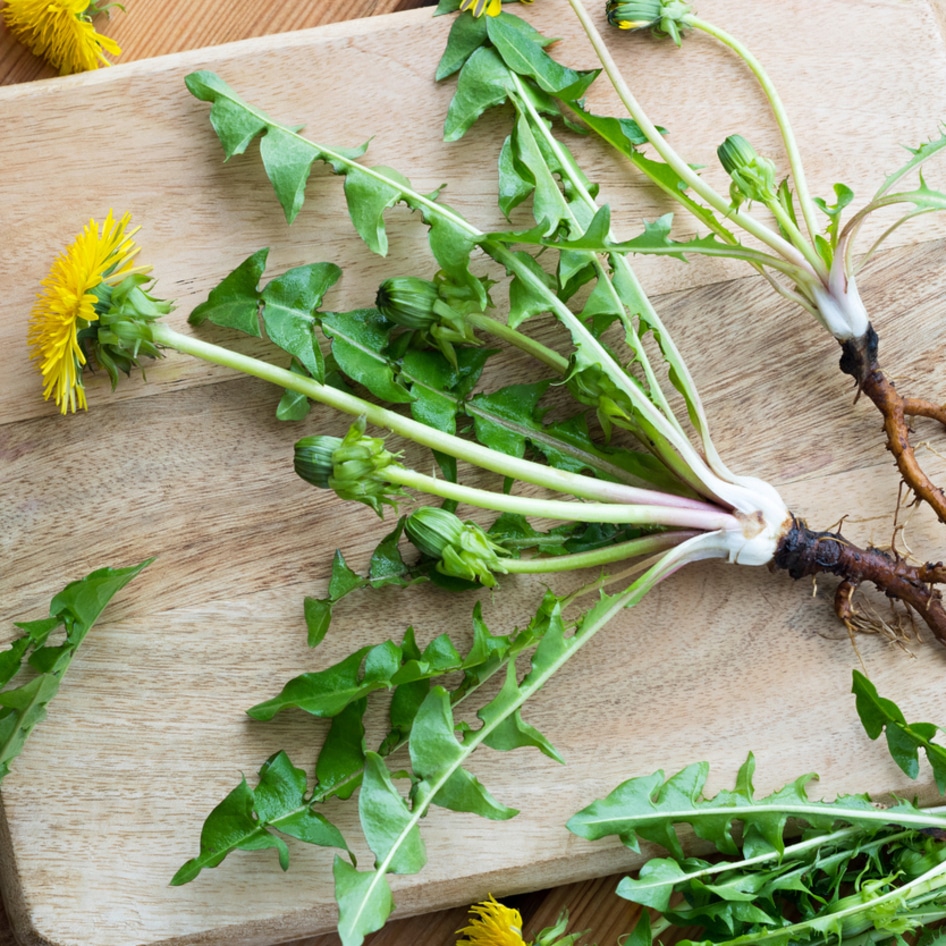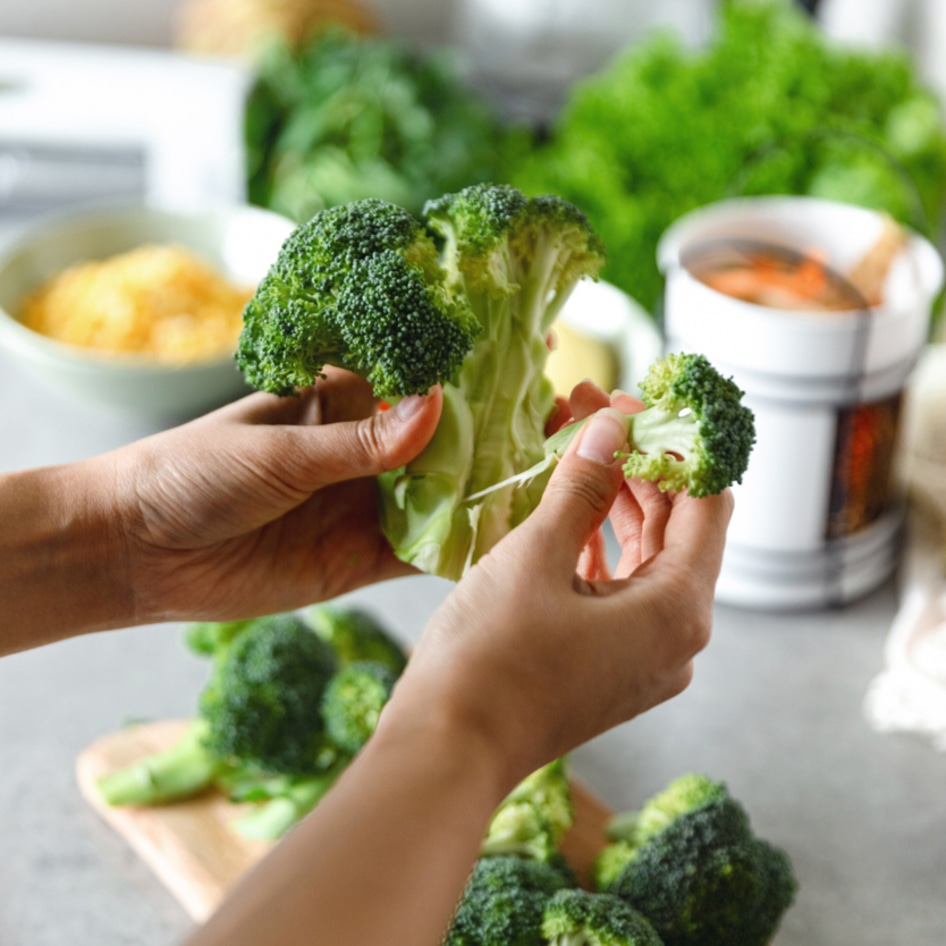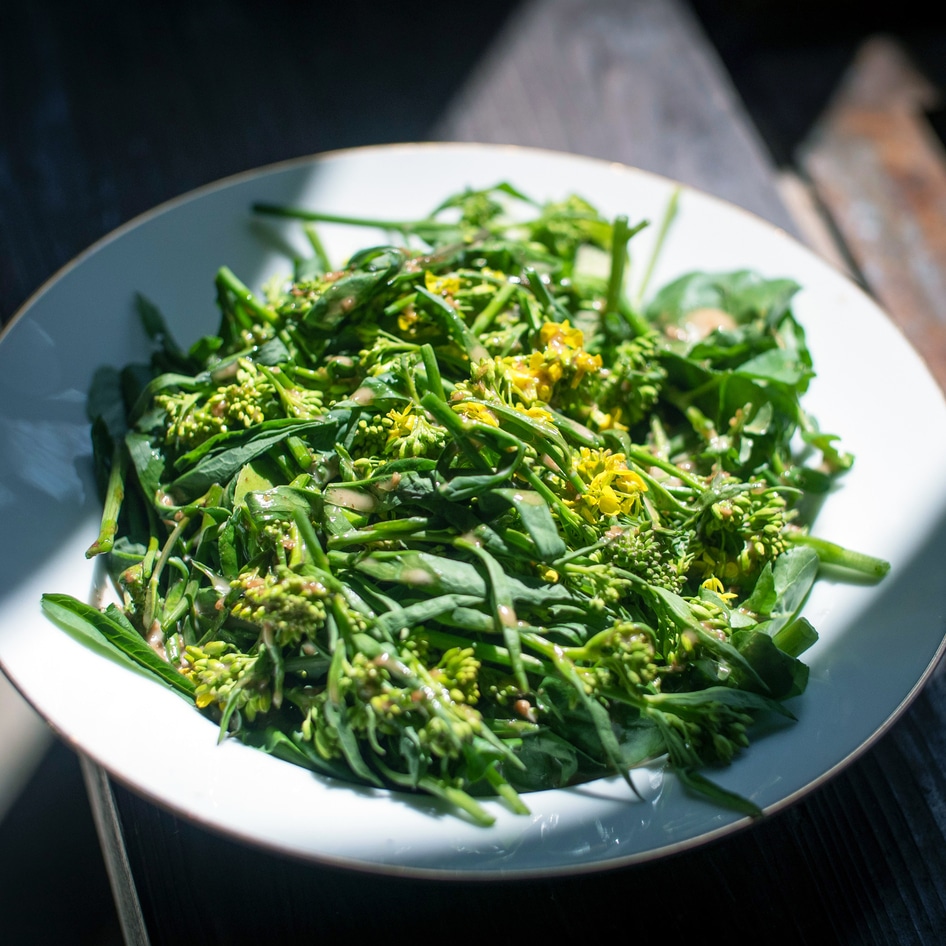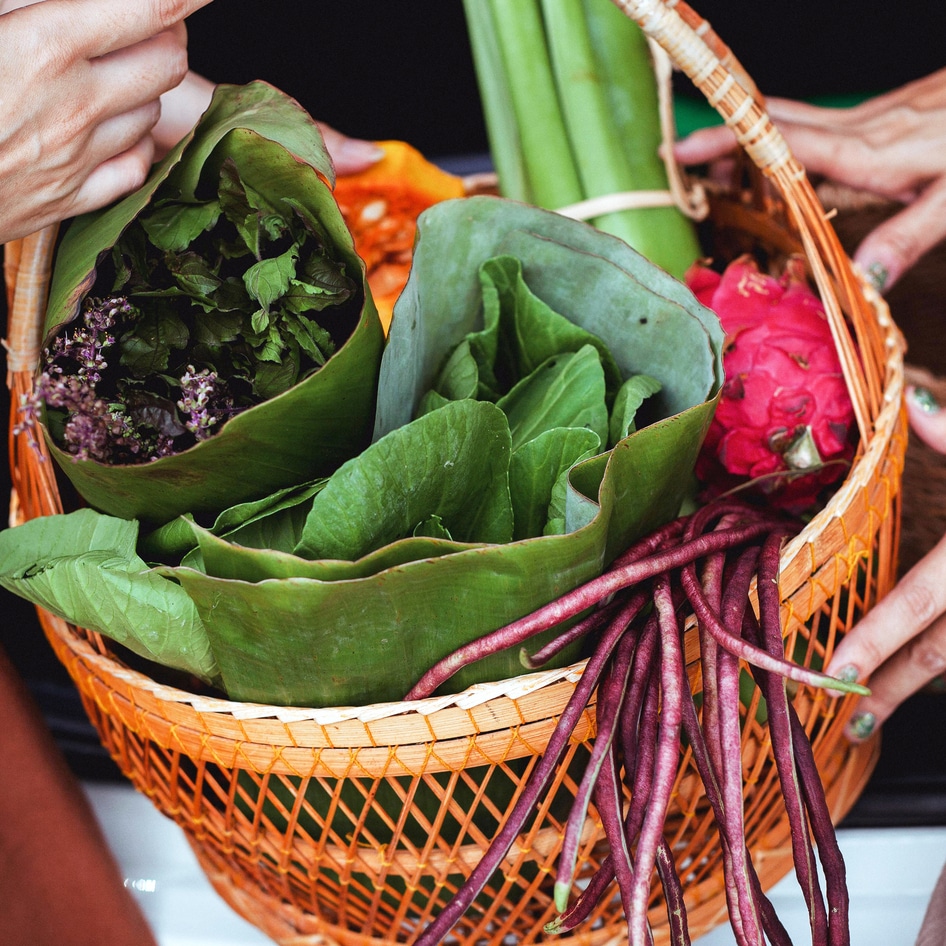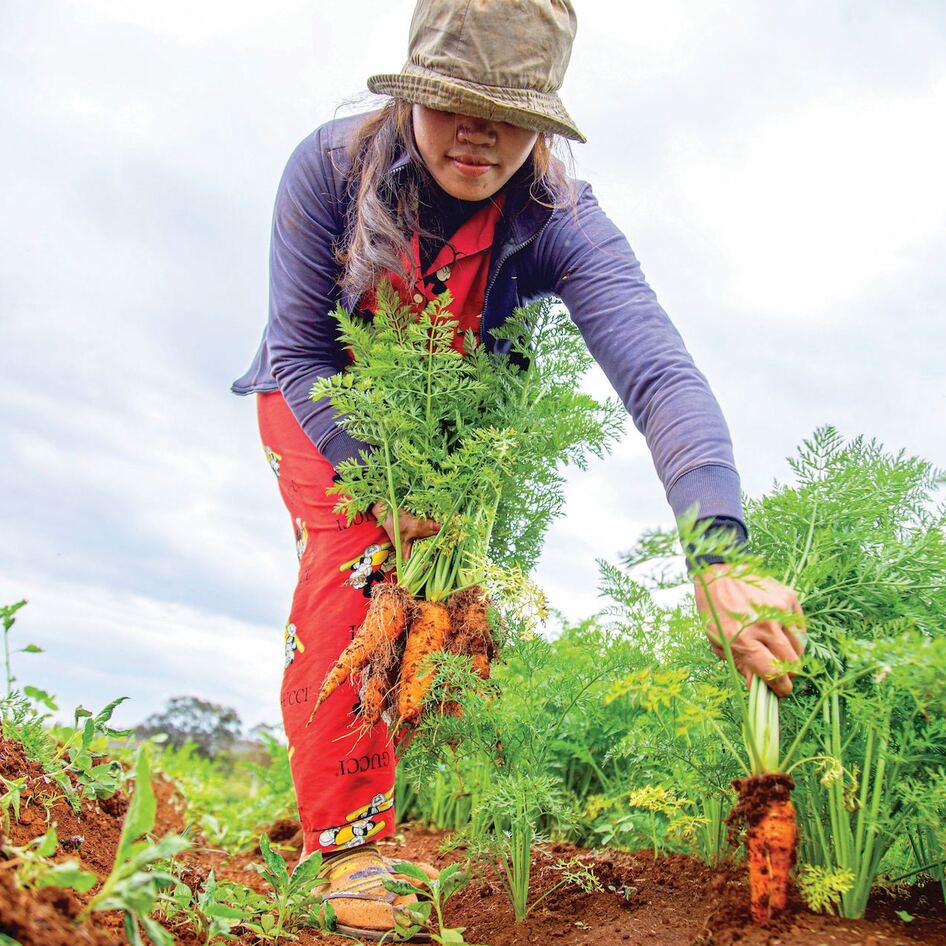5 Weeds You Should Be Eating
Move over kale—nutritious, flavorful foods are available just outside your door.
October 28, 2015
Being a locavore means sourcing as much of your food within a 100-mile radius as you can, but who needs to travel that far when you can take less than 100 steps for fresh, local, (and free) organic food? Get on trend by enjoying the dozens of varieties of edible weeds and plants sprouting just outside your front door. Some are mild and delicate, while others are bold and zesty, but nearly all are packed with vitamins and minerals—some more so than our favorite go-to veggies! So skip the farmers’ market this week, arm yourself with a good reference guide, and forage for five of our favorite plants you should be on look out for.
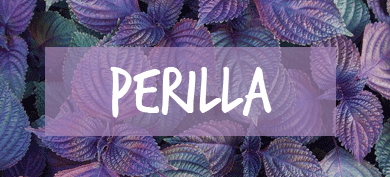
The plant: Perilla grows abundantly in much of the eastern United States and sports large, purple-hued leaves with jagged edges and deep purple stems. Also known as shiso, perilla grows in sunny, open fields, waste places, on roadsides, and in woodlands. Both red and green varieties are identifiable by a strong minty aroma.
The eats: Perilla’s flower buds can be used in salads, but the large calcium- and iron-rich leaves are the most nutritious. Chefs add them to tofu dishes, soups, tempura, sprinkled over rice and even used to wrap sushi. Leaves can be pickled as part of a kimchi, used as potherbs, or even dried with salt or sugar to sprinkle over sweet or savory foods. Some say the plant’s flavor is reminiscent of cinnamon, licorice or basil, and indeed, you can use it as you would basil or mint.
The nutrition: A good source of potassium, calcium, vitamins A and B2, perilla is also rich in alpha-linoleic acid, a plant version of Omega-3 fatty acids, and a protector of the heart and blood vessels.
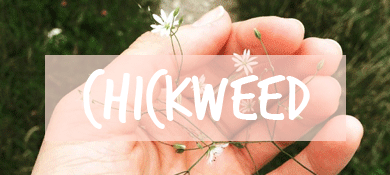
The plant: Chickweed hugs the ground, produces a small white flower with five petals and sports pointed spade or oval leaves with a thin line of white hair on the stem. It grows year-round and can be found in lawns, fields, and waste areas.
The eats: The entire plant is edible. After a thorough washing, the raw chopped leaves, stems, and flowers add a corn silk flavor to salads, sandwiches, or mashed potatoes. When cooked, chickweed takes on a spinach-like flavor and works well in soups.
The nutrition: Ascorbic acid, beta-carotene, calcium, magnesium, niacin, potassium, riboflavin, selenium, and thiamin are just a few of the nutrients gained from eating this weed.
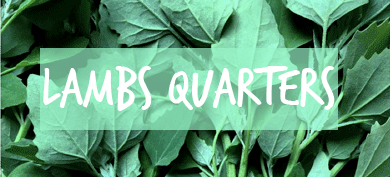
The plant: A very un-vegan name for what should be a staple, Lambs Quarters can be found year-round almost anywhere there is soil. Maligned by gardeners because of how quickly and pervasively it grows, the plant actually helps restore nutrients to soil and provides for some seriously good eats. The weed is identifiable by a fine white powder (mineral salt pulled from the ground) on its goosefoot-shaped leaves and small green flower clusters.
The eats: The leaves, flowers, stems and seeds are all edible. That said, similar to its cousins spinach and chard, Lambs Quarter contains oxalic acid, which imparts a pleasant, sharp taste, but can interfere with calcium absorption if eaten raw and in excess. The weed can be added to smoothies and juices in place of greens to boost nutrition, steamed and added into rice, or served as sautéed greens.
The nutrition: Lambs Quarters is one of the most nutritionally dense plants out there, with a one-cup serving boasting 10 times the daily amount of vitamin K, three times the amount of vitamin A, iron, vitamins B1, B2, C, and half a daily dose of calcium and magnesium.
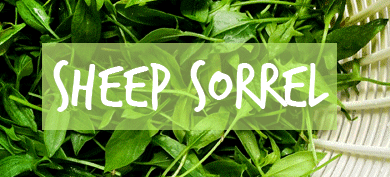
The plant: Sheep sorrel can be found (in abundance in the South) on roadsides, sidewalks, waste areas, open fields, floodplains, and marshes. The weed can grow up to two feet tall and is highlighted by bright green stalks and tiny white or reddish flowers along the tops. The distinctive “toothed” leaves are arrowhead-shaped that lock on its stem.
The eats: Sheep sorrel is revered as one of the tastiest plants of its kind, with a juicy, lemony flavor. Its leaves are punchy and tart, making them a favorite to be nibbled by hikers and foragers. It’s closely related to the sorrel used in French cuisine and can be substituted as such. Use sorrel to make an almond pesto, add chopped leaves to your morning tofu scramble, or in a creamy potato soup.
The nutrition: Sheep sorrel is high in vitamin C, vitamin A, calcium, potassium, and beta-carotene.
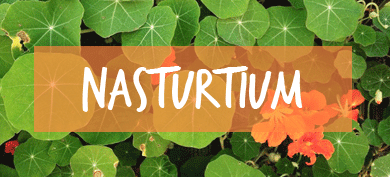
The plant: A striking plant with bold orange, red or white flowers and large lily pad-like leaves, nasturtiums bring a pop of color to gardens and are also identifiable by their mustardy aroma.
The eats: The tender leaves, stems, and blossoms of this beautiful plant start off sweet, but soon give way to a peppery heat reminiscent of radish or arugula. Use in place of watercress, in stir-fries, or use the leaves to make rice-stuffed dolmas. For a little less spice, stick to the milder leaves and blossoms and choose plants that have grown in the shade.
The nutrition: Nasturtium is high in vitamins A, C, and D and are a natural antibiotic—eating a few of the leaves can help treat a cold or flu.
VegNews reminds you to please make sure to consult a reputable field guide or expert on how to safely identify edible plants before you go picking.
JUMP TO ... Latest News | Recipes | Guides | Health | Subscribe
Images courtesy of Michael Coghlan, @phoebewaiyanlau, @_rivavera, @fluffforager, @ardenthomesteader, and @natures.corner.

